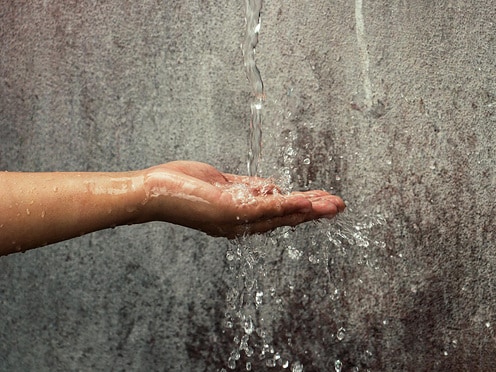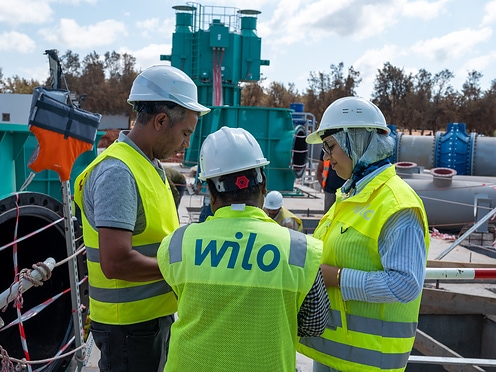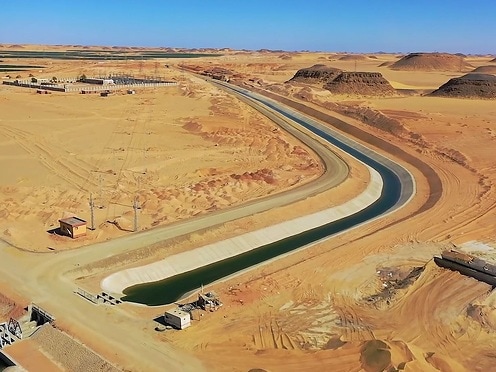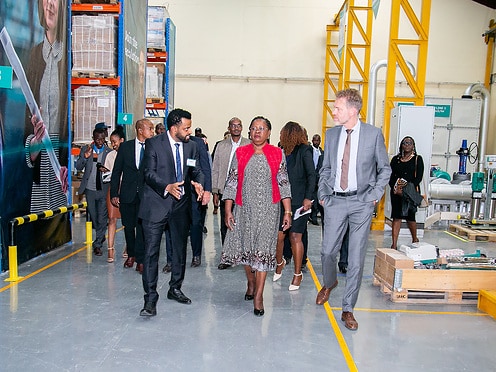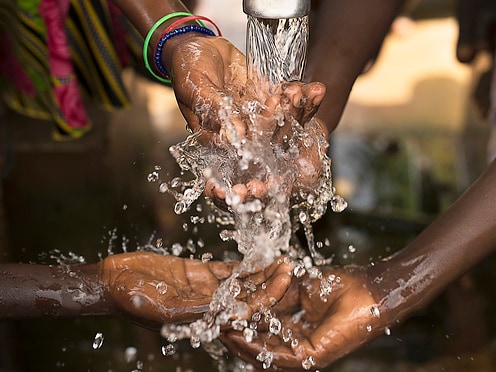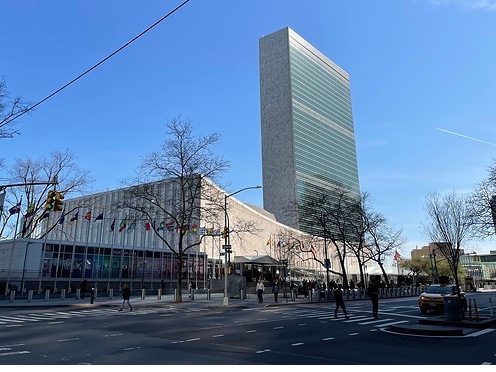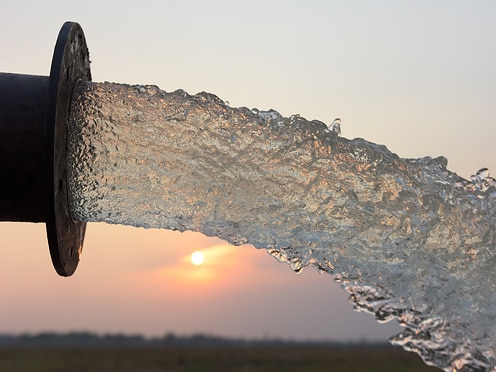Understanding Water Shortage and the Global Water Crisis
This article features:
The 2023 United Nations World Water Development Report showed that water shortages are a big problem all over the world. To understand the global water crisis, we need to know the various reasons behind it. Join us as we explore viable solutions to protect this precious resource for future generations.

Causes of Water Shortage
Climate Change: A Major Factor
Climate change is a main cause of water shortages. It changes weather patterns, causing irregular rainfall and long periods without rain. Also, diminishing snowpack in mountainous regions disrupts the balance of freshwater availability, worsening the crisis. The Intergovernmental Panel on Climate Change (IPCC) warns that without immediate and decisive action to mitigate climate change, the world risks facing unprecedented water shortages in the coming decades due to heatwaves and droughts.

Overuse & Pollution of Water Reserves
Human activities play a decisive role in intensifying water scarcity, with the exploitation of freshwater reservoirs for agricultural, industrial, and domestic purposes. Agriculture alone accounts for approximately 70 per cent of global freshwater usage, often employing inefficient irrigation methods that further strain water reserves. In many regions around the world excessive groundwater extraction is depleting water supplies. This poses a threat to future water security and water safety.
Water reservoirs face contamination from various pollutants, including industrial discharges, agricultural runoff laden with pesticides and fertilizers, and improper waste disposal practices. This pollution not only compromises the quality of freshwater but also escalates the challenge of water shortage. The WHO reports that 80 per cent of wastewater globally is not treated correctly before being discharged into the environment. This can be harmful to both people and nature.

Urbanisation: Thirsty for Resources
Rapid urban expansion can have detrimental effects on water resources by increasing the demand for water and reducing natural land and water storage. As cities grow, they require more water for various purposes such as drinking, sanitation, and industrial activities. This increased demand puts pressure on existing water sources, leading to shortages and potential conflicts over allocation.
Furthermore, as urban areas expand, they often pave over natural land surfaces that would otherwise absorb and store water. This reduces the amount of water that can infiltrate into the ground and replenish groundwater supplies. Additionally, the construction of buildings, roads, and other infrastructure can disrupt natural flow patterns, leading to increased runoff and erosion.
In addition to the direct impacts on water availability, rapid urban expansion can also contribute to water pollution. Increased urbanisation often leads to higher levels of pollution from sources such as sewage, industrial discharge, and runoff from roads and parking lots. This pollution can degrade water quality, making it unsafe for human consumption and harming aquatic ecosystems.

Inadequate Infrastructure and Mismanagement
Inefficient water transport systems, coupled with weak regulatory frameworks, pose significant impediments to sustainable water management. The lack of investment in water conservation technologies further compounds these challenges. In many regions around the world, particularly in Sub-Saharan Africa and parts of South Asia, the lack of access to clean water and proper sanitation facilities is a major issue that has far-reaching consequences. This lack of access perpetuates a cycle of poverty and ill-health, creating significant challenges for individuals and communities.
Without access to clean water, people are forced to rely on contaminated sources, leading to a range of waterborne diseases such as cholera, typhoid, and dysentery. These diseases can have devastating effects on individuals, particularly children, who are more vulnerable to the effects of poor water quality. In addition, the time and effort required to collect water from distant sources can limit opportunities for education and economic development, further perpetuating the cycle of poverty.
The interplay between water scarcity and socio-economic development is complex and multifaceted. Addressing these issues requires a holistic approach that considers the social, economic, and environmental factors at play. Investing in clean water and sanitation infrastructure, promoting education helps empowering communities to manage their water resources sustainably.
Solutions: Preventing Water Shortages
1. Efficient Water Use
2. Pollution Control

Strict rules and effective waste management are necessary to reduce water pollution and protect freshwater sources. Advanced methods such as membrane filtration and UV disinfection are highly effective in removing pollutants from wastewater. Membrane filtration involves passing water through a semi-permeable membrane that traps contaminants, while UV disinfection uses ultraviolet light to kill bacteria and other harmful microorganisms. These technologies are crucial in ensuring that the water released back into the environment meets strict quality standards and is safe for human consumption.
In addition to advanced treatment methods, fostering public awareness and community engagement is essential in promoting responsible stewardship of water resources. By educating the public about the importance of water conservation and pollution prevention, individuals can make informed choices that help protect our water sources for future generations. Community engagement initiatives, such as clean-up events and educational workshops, can also encourage people to take action and adopt sustainable practices in their daily lives.
3. Urban Planning

Integrating sustainable water management practices into urban planning initiatives is paramount to strike a balance between urban growth and water conservation. Green infrastructure refers to the use of natural systems and processes to manage water in urban environments. Rainwater harvesting involves collecting and storing rainwater for later use, reducing the demand on municipal water supplies.
Permeable pavements allow rainwater to seep into the ground, reducing runoff and preventing flooding. Green roofs are covered with vegetation that absorbs rainwater and provides insulation, reducing energy costs.
By implementing these green infrastructure practices, cities can reduce the amount of stormwater runoff that carries pollutants into waterways, protecting water quality and aquatic ecosystems. Additionally, recharging groundwater through these methods helps to ensure a sustainable water supply for future generations.
Encouraging water-saving design ideas, such as efficient landscaping that uses native plants and drip irrigation systems, can further reduce water consumption in urban areas. Recycling greywater, which is wastewater from sources like sinks and showers, for non-potable uses like irrigation can also help to conserve water resources.
4. Investment in Infrastructure

Upgrading ageing water infrastructure and incentivising the adoption of water conservation technologies are pivotal steps towards building a resilient water ecosystem.
Public-private partnerships (PPPs) are important for funding big infrastructure projects like desalination plants, water recycling facilities, and water transfer schemes. In addition to traditional methods, the use of digital technologies has revolutionised the way water distribution systems are managed. Remote sensing technology allows for real-time monitoring of water resources, detecting leaks and identifying areas of high-water usage.
Geographic Information Systems (GIS) provide a spatial understanding of water distribution networks, helping to identify areas in need of infrastructure upgrades or repairs. Artificial intelligence (AI) can analyse vast amounts of data to predict water demand, optimise pumping schedules, and even detect anomalies in the system that may indicate a potential issue.
By leveraging these digital technologies, water utilities can improve the efficiency of their operations, reduce water losses, and ensure a more reliable supply of water to consumers. Proactive decision-making based on real-time data and predictive analytics can help to optimise water resource management, ensuring that water is allocated efficiently and sustainably.

Conclusion: The Climate Crisis is a Water Crisis
As global temperatures continue to rise due to human activities such as burning fossil fuels and deforestation, the impact on water resources becomes increasingly evident. Droughts become more frequent and severe, leading to water scarcity in many regions around the world.
Changes in rainfall patterns can cause more intense rain in some places, leading to flooding and water pollution. Other areas may have longer periods without rain. This variability in weather patterns makes it difficult for communities to predict and manage their water resources effectively.
Overall, the interaction between climate change and water scarcity highlights the urgent need for global action to mitigate the impacts of these megatrends.
That requires collaboration and coordination on a global scale. It is essential for countries to work together to implement ambitious mitigation measures to limit global warming and reduce the negative impacts on our planet. This includes reducing greenhouse gas emissions, transitioning to renewable energy sources, and implementing sustainable practices in various industries.
Furthermore, it is crucial to protect vulnerable ecosystems and communities. This involves implementing adaptation strategies, investing in infrastructure to improve water management, and supporting communities that are most at risk. By taking proactive measures to address the climate crisis, we can help ensure a more sustainable future for generations to come.

